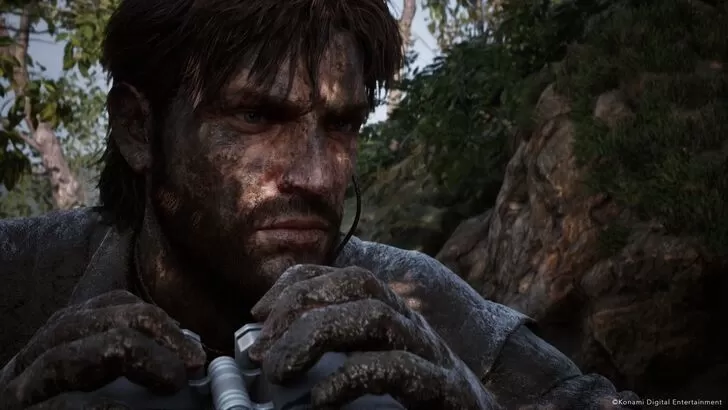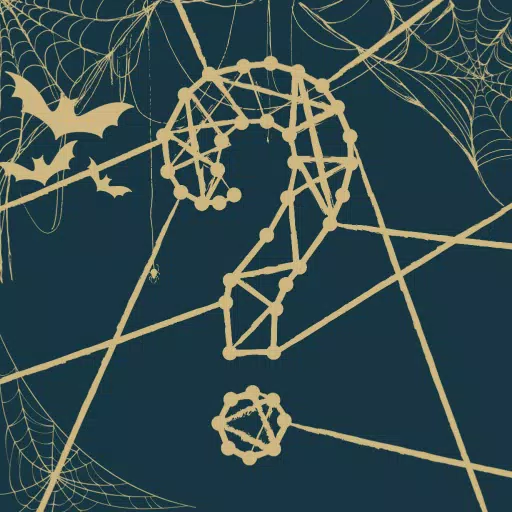Ubisoft has once again activated the Animus, this time transporting us to Japan’s Sengoku Period. In Assassin’s Creed Shadows, players encounter historical figures from 1579, such as Fujibayashi Nagato, Akechi Mitsuhide, and Yasuke, the African samurai who served Oda Nobunaga. As with other titles in the series, these characters are seamlessly integrated into a narrative that blends historical facts with fictional elements, crafting a gripping tale of revenge, betrayal, and murder. While the game may humorously suggest that Yasuke killed foes to gather XP for a gold-tier weapon, it’s a playful nod to the game’s mechanics rather than a historical claim.
Assassin’s Creed is renowned for its historical fiction, masterfully weaving gaps in history into a science fiction narrative about a secret society aiming for world domination through the ancient powers of a pre-human civilization. Ubisoft’s dedication to creating immersive, open-world environments is rooted in extensive research, yet it's crucial to understand that these games are not history lessons. The developers creatively alter historical events to enhance the storytelling, resulting in numerous "historical inaccuracies" that enrich the gaming experience.
Here are ten instances where Assassin’s Creed creatively rewrote history:
The Assassins vs Templars War
 Let’s start with the most fundamental aspect of the series: the conflict between the Assassins and the Templars is entirely fictional. Historical evidence does not support any war between the Order of Assassins, founded in 1090 AD, and the Knights Templar, established in 1118. Both groups existed during the Crusades, but their ideological opposition and centuries-long conflict are pure fantasy. Only the first Assassin’s Creed game aligns with this historical period, though it still embellishes their interactions.
Let’s start with the most fundamental aspect of the series: the conflict between the Assassins and the Templars is entirely fictional. Historical evidence does not support any war between the Order of Assassins, founded in 1090 AD, and the Knights Templar, established in 1118. Both groups existed during the Crusades, but their ideological opposition and centuries-long conflict are pure fantasy. Only the first Assassin’s Creed game aligns with this historical period, though it still embellishes their interactions.
The Borgias and their Superpowered Pope
 In Assassin’s Creed 2 and Brotherhood, the focus is on Ezio’s battle against the Borgia family, with Cardinal Rodrigo Borgia, who becomes Pope Alexander VI, portrayed as the Templar Grand Master. This narrative includes a fictional plot to use the Apple of Eden to control humanity, culminating in a dramatic showdown under the Vatican. While the Borgias' portrayal leans into villainy, the games exaggerate their criminality, with Cesare Borgia depicted as a psychopathic leader based on rumors rather than solid historical evidence.
In Assassin’s Creed 2 and Brotherhood, the focus is on Ezio’s battle against the Borgia family, with Cardinal Rodrigo Borgia, who becomes Pope Alexander VI, portrayed as the Templar Grand Master. This narrative includes a fictional plot to use the Apple of Eden to control humanity, culminating in a dramatic showdown under the Vatican. While the Borgias' portrayal leans into villainy, the games exaggerate their criminality, with Cesare Borgia depicted as a psychopathic leader based on rumors rather than solid historical evidence.
Machiavelli, Enemy of the Borgias
 In Assassin’s Creed 2 and Brotherhood, Niccolò Machiavelli is shown as Ezio’s ally and leader of the Italian Assassin’s Bureau, fighting against the Borgias. However, Machiavelli’s real-life philosophies and interactions with the Borgias contradict this portrayal. He admired Rodrigo’s cunning and served Cesare, viewing him as a model ruler, making his depiction in the games a significant deviation from historical accounts.
In Assassin’s Creed 2 and Brotherhood, Niccolò Machiavelli is shown as Ezio’s ally and leader of the Italian Assassin’s Bureau, fighting against the Borgias. However, Machiavelli’s real-life philosophies and interactions with the Borgias contradict this portrayal. He admired Rodrigo’s cunning and served Cesare, viewing him as a model ruler, making his depiction in the games a significant deviation from historical accounts.
The Incredible Leonardo da Vinci and his Flying Machine
 Assassin’s Creed 2 showcases a strong friendship between Ezio and Leonardo da Vinci, accurately capturing da Vinci’s charisma. However, the game alters his timeline, moving him from Florence to Venice in 1481, deviating from his actual move to Milan in 1482. While da Vinci’s engineering feats are celebrated, the game’s depiction of functional war machines and a flying glider, though inspired by his designs, stretches beyond historical records.
Assassin’s Creed 2 showcases a strong friendship between Ezio and Leonardo da Vinci, accurately capturing da Vinci’s charisma. However, the game alters his timeline, moving him from Florence to Venice in 1481, deviating from his actual move to Milan in 1482. While da Vinci’s engineering feats are celebrated, the game’s depiction of functional war machines and a flying glider, though inspired by his designs, stretches beyond historical records.
The Bloody Boston Tea Party
 Assassin’s Creed 3 transforms the non-violent Boston Tea Party into a violent confrontation. In reality, the protest was peaceful, with no casualties. The game, however, portrays protagonist Connor engaging in combat with British guards, turning the event into a bloodbath. Additionally, the game attributes the planning of the protest to Samuel Adams, despite historical ambiguity about his involvement.
Assassin’s Creed 3 transforms the non-violent Boston Tea Party into a violent confrontation. In reality, the protest was peaceful, with no casualties. The game, however, portrays protagonist Connor engaging in combat with British guards, turning the event into a bloodbath. Additionally, the game attributes the planning of the protest to Samuel Adams, despite historical ambiguity about his involvement.
The Lone Mohawk
 Assassin’s Creed 3’s portrayal of Connor, a Mohawk fighting alongside the Patriots, contradicts historical alliances, as the Mohawk were allied with the British. While the character may be inspired by Louis Cook, a Mohawk who fought with the Continental Army, such occurrences were rare, highlighting the game’s "what if?" approach to history.
Assassin’s Creed 3’s portrayal of Connor, a Mohawk fighting alongside the Patriots, contradicts historical alliances, as the Mohawk were allied with the British. While the character may be inspired by Louis Cook, a Mohawk who fought with the Continental Army, such occurrences were rare, highlighting the game’s "what if?" approach to history.
The Templar Revolution
 Assassin’s Creed Unity’s depiction of the French Revolution as a Templar conspiracy oversimplifies the complex causes behind the historical event. The game attributes the famine to a Templar plot, whereas it was caused by natural disasters. Furthermore, Unity focuses narrowly on the Reign of Terror, neglecting the broader scope of the revolution.
Assassin’s Creed Unity’s depiction of the French Revolution as a Templar conspiracy oversimplifies the complex causes behind the historical event. The game attributes the famine to a Templar plot, whereas it was caused by natural disasters. Furthermore, Unity focuses narrowly on the Reign of Terror, neglecting the broader scope of the revolution.
The Controversial Killing of King Louis 16
 In Assassin’s Creed Unity, the execution of King Louis 16 is portrayed as a contentious decision swayed by a single vote from a Templar conspirator. In reality, the vote was a clear majority in favor of execution. The game also downplays the widespread anger against the French aristocracy, barely touching on the King’s attempt to flee to Austria, which further tarnished his reputation.
In Assassin’s Creed Unity, the execution of King Louis 16 is portrayed as a contentious decision swayed by a single vote from a Templar conspirator. In reality, the vote was a clear majority in favor of execution. The game also downplays the widespread anger against the French aristocracy, barely touching on the King’s attempt to flee to Austria, which further tarnished his reputation.
Jack the Assassin
 Assassin’s Creed Syndicate reimagines Jack the Ripper as a rogue Assassin aiming to control the London Brotherhood. This portrayal strays far from historical accounts of the serial killer, who remains unidentified to this day. The game's narrative adds a dramatic twist, suggesting a larger conspiracy within the Assassin order.
Assassin’s Creed Syndicate reimagines Jack the Ripper as a rogue Assassin aiming to control the London Brotherhood. This portrayal strays far from historical accounts of the serial killer, who remains unidentified to this day. The game's narrative adds a dramatic twist, suggesting a larger conspiracy within the Assassin order.
The Assassination of the Tyrant Julius Caesar
 Assassin’s Creed Origins reinterprets Julius Caesar's assassination, framing it as a battle against a proto-Templar leader. The game inaccurately depicts Caesar's political stance and the Roman Forum, ignoring his popular reforms like land redistribution. Caesar’s death in the game is portrayed as a victory, whereas historically, it led to civil war and the rise of the Roman Empire, contradicting the game’s narrative.
Assassin’s Creed Origins reinterprets Julius Caesar's assassination, framing it as a battle against a proto-Templar leader. The game inaccurately depicts Caesar's political stance and the Roman Forum, ignoring his popular reforms like land redistribution. Caesar’s death in the game is portrayed as a victory, whereas historically, it led to civil war and the rise of the Roman Empire, contradicting the game’s narrative.

























![City Devil: Restart [v0.2]](https://img.icssh.com/uploads/38/1719554737667e52b102f12.jpg)




